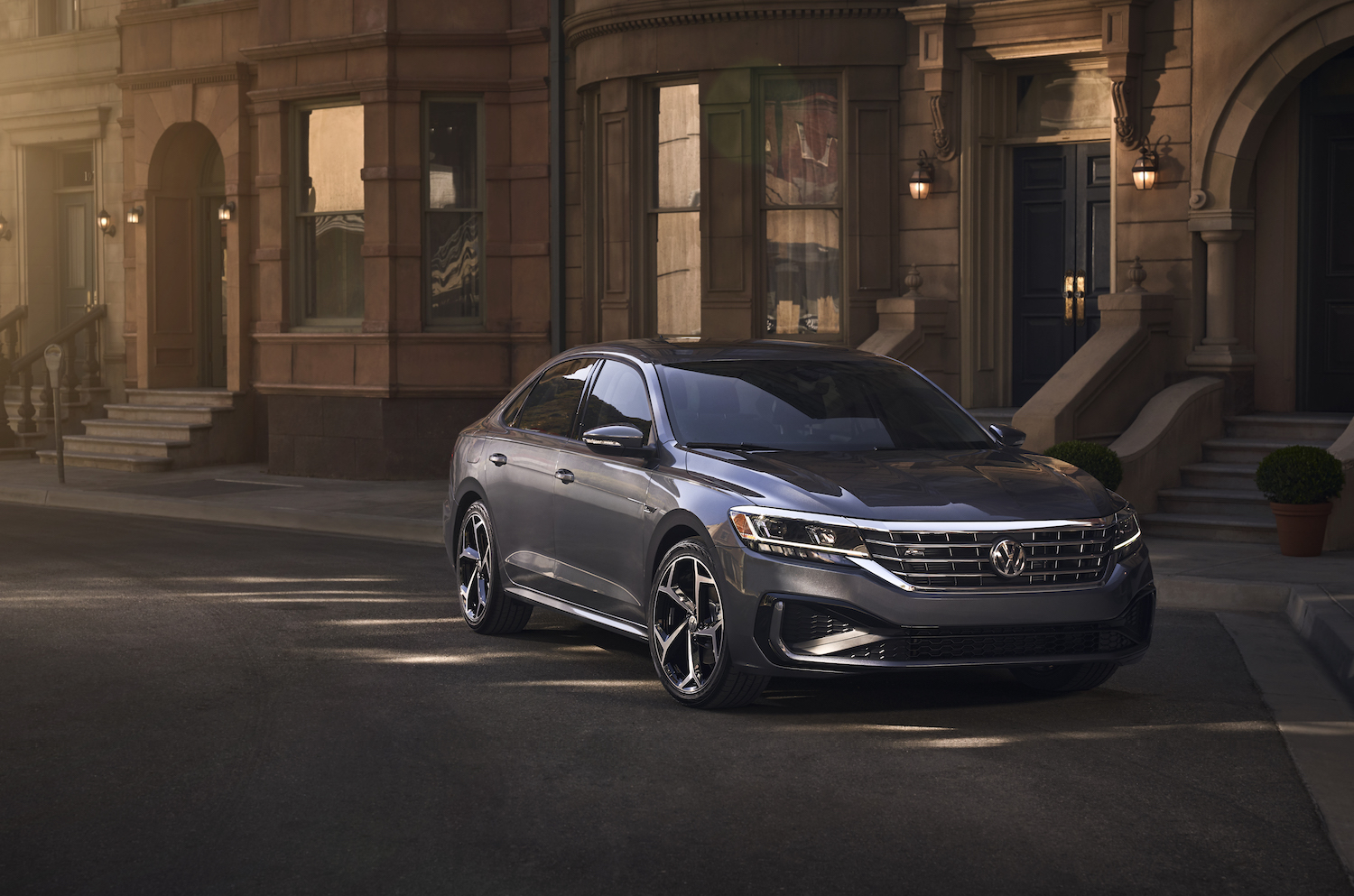Media | Articles
The 2020 Volkswagen Passat is just more of the same
Like pretty much every car company, Volkswagen is no longer a car company. More than half (53 percent) of its sales in the U.S. were crossovers last year, and that number is increasing while traditional car sales continue to decline. It’s apparently what the people want of the People’s Car company, and since SUVs are more profitable, it’s what the company wants.
No wonder the new Passat, resplendent in fresh sheetmetal for 2020 that replaces every panel except the roof, looks and feels pretty much the same. VW is spending its money elsewhere, including on a huge electrification drive, so instead of a whole new Passat with liquid digital clusters and high-speed console computer processors, we are getting a make-do re-skin of the aging PQ platform. There is one engine and transmission combo available, now four trim levels for 2020 (instead of two for 2019 and six for 2018), and pretty much nothing new except a bunch of items once optional that have now been made standard. Don’t be surprised if you walk into your VW dealer asking to look at a Passat and he says, “a Pa-what?”
In the the car’s defense, if you have always wanted a fairly large and plain mid-size sedan and felt the Toyota Camry and Honda Accord are too common, the Hyundai Sonata and Mazda 6 are too good-looking, and the Chevy Malibu just makes too much sense, the Passat is technically an alternative.
The Passat once offered the feel of German solidity in the affordable mid-size class (somewhat at the expense of interior space) but no longer: it has acres of space inside as well as in the trunk, but its structure feels about as stiff as everyone else’s and its driving qualities are entirely forgettable. The steering is especially numb and not worthy of a suspension that otherwise does a decent job of digesting corners.
Marketplace
Buy and sell classics with confidence

As we said, the V-6 is gone and there’s just one engine, the 2.0-liter turbo four, and one transmission, a six-speed automatic. The engine’s torque is up 12 percent to 206 pound-feet, and the powertrain is said to be capable of delivering 27 mpg combined, which is decent for a big car but far from the benchmark for a non-hybrid. Otherwise, the Passat’s story is one of content: From the $23,915 base price for an S to the $32,015 price for the loaded SEL (including $920 destination), VW has crammed a few more features and either kept the prices the same or lowered them a few hundred bucks. That includes safety equipment such as blind-spot monitoring and rear traffic alert, standard on even the base S. A sunroof costs $995 unless you opt for the two highest trim levels, in which it comes standard.
All the trims get unique wheels while the sportier R-Line ($29,565) gets 19-inch cyber-snowflake jobs as well as an angry black-plastic grimace pasted to the front bumper. VW seems pretty stoked to be giving you keyless start even in the SE trim and App-Connect, which lets you sync your phone apps to the car so you don’t have to rely on its own fairly slow navigation system. But that’s pretty thin soup when you look at how hard Hyundai is working to earn your dollars with the dazzling new Sonata.
From cameras to TV sets to refrigerators and lawnmowers, every product segment has aging designs that have been redecorated slightly so they can be billed as “new.” Despite the sheetmetal changes, which soften the exterior into something approaching that of the last Ford Taurus, the Passat is the mid-size segment’s example of this.
Which leads to the inevitable question: Are car sales falling because everyone wants an SUV, or because companies like VW that once offered unique and distinct products have simply given up on cars?














